#and not a region with multiple cultures history and PEOPLE
Explore tagged Tumblr posts
Text

Yeah epic poetry is a major convention and is what other traditions of poetry here evolved From.
They originated as forms of recording and passing on history and legends in pre-literate Wardi societies (and still are mostly performed and transmitted orally, though most of the old epics have been recorded in writing and are now strictly 'canonized', and most performers memorize from these 'canon' texts). Each story would be divided into roughly equal 'chapters' which could be individually memorized. They are traditionally designed to be sung, and follow strict poetic meter but typically do not have a rhyming scheme (though often show favor for alliterative rhythm).
Most of the genre is comprised of old, established epics, but the practice of recording history this way has been retained in the commission of epic poetry-form documentation of major current events (these are never as popular).
The main traits of the genre are:
Taking place over broad spans of time and locations
Focus is mostly upon esteemed individuals and heroic exploits.
Narrative rhythm is established through repetition of key words and phrases, as well as scenes that thematically echo each other
Heavy use of epithets
Very flowery text that lavishes in visual description of people, animals, buildings, weapons, clothing, and landscapes.
Extensive family trees are provided for most major characters.
Descriptions often rely heavily upon extended similes and figurative language
Characters speak with highly formal language and perform lengthy monologues
Heavy focus on normative male homosociality
Heroic figures embody societal values, though are often shown as imperfect and having to fight baser aspects of their nature (thus making them perhaps The Best embodiments, showing their self-control and discipline)
Heroic figures are 'allowed' to have major flaws, but these flaws are typically connected to a perceived virtue (ie a highly accomplished warrior is foolishly arrogant about it, a hero's fidelity to his family makes him gullible to a malicious relative, etc)
Heavy focus on kinship, family, and honor (and typically exploring multiple dimensions of these values, including negative ones)
Typically having elements of tragedy, which is often interconnected with the aforementioned values- the tragedy occurs because the heroes do the right things in spite of inevitable consequences.
The most culturally significant epic poem is a mythologized recounting of the life of Erub, a (semi)historical king and founder hero. The only thing historically definite about his life is that a prince named Something Like Erub (more likely Urub, Urbin, or Uru) from the Ephenni tribe was involved in a series of campaigns that lead to about 2/5ths of the region being conquered and formed into a kingdom (most of the present day provinces of Ephennos, Wardin, and Erubinnos), which experienced a period of relative peace and stability for about a century before the First wave of Imperial Burri occupation occurred.
The overall plot points:
-Erub's birth and adolescence, in which he is guided to become a great warrior and skilled leader by a deity who is only described in epithets, mostly war and khait-related ('The thrower of spears' 'with the khaitsmane shield', 'whose horns are iron', 'the wild bull(khait)', 'peerless mounted archer'). This is usually interpreted as the Face Inyamache (and Does very likely represent an early incarnation of this deity, possibly a contributor to Odomache as well).
-Erub's ascension to the Ephenni throne via the sacrificial bullfight rite, in which the bull is a magical animal and son of his tutelary deity.
-Erub courting Hippemides, a princess of North Ephennos (who is described as descending from the chief Burri solar deity Inanariya via his son, minor solar deity Nibeña).
-Erub's marriage to Hippemides as a chief wife, and two 'prince concubines' (they aren't assigned definite sex characteristics but are usually understood as akoshos in the contemporary, almost definitely would not have been men)
-Efforts for diplomacy between the Ephenni and Wardinae tribes, historical enemies.
-Erub's king-sister Inyari is insulted by the Wardinae king Janes assuming her to be Erub's wife (a lesser role). In retribution, she commands their younger brother Nedelas to trespass on the king's lands and steal his cattle (described as 'lunar cattle' and implied to be some kind of demigod animal). Janes demands that Erub hand over his brother or face war. Erub has a long monologue examining the complexity of the situation (as his siblings were clearly in the wrong), but loyalty to his family overcomes. War is declared.
-War between the Ephenni and Wardinae tribes.
-Erub and Janes agree to settle the war in single combat. Both are evenly matched and unable to defeat one another. They are both such great and honorable warriors and develop so much respect for one another that they ally instead, and swear brotherhood in front of their collective peoples.
-Erub and Janes pal around for a few years and undertake various heroic tasks and defeat minor enemies of each of their tribes.
-Erub marries one of Janes' cousins as a second wife.
-Janes (ignoring several warning omens) slays a mighty albino buffalo on a hunt, which turns out to have been a powerful animal spirit who curses him in its dying breaths, stating that his death will 'emerge from' his own hunting dogs (the word for 'emerge' is more ambiguous in the source language, and can literally mean 'will physically come out of' or just figuratively mean 'come from'). Janes kills all his hunting dogs and declares himself invulnerable.
-Janes' wife, the queen Mitlewari, is captured by Achetil, the king of the powerful Morinnae tribe (probably a Wogan group). Janes declares war, and Erub follows suit out of loyalty to his sworn brother.
-The fighting between the Ephenni/Wardinae and Morinnae turns into a year of bloody warfare, with many great warriors dying.
-The tide of battle turns to the Ephenni/Wardinae side, and Achetil flees with the remainder of his forces within the city walls. The city of Morinnos is sieged, and Achetil's wives and daughters throw themselves from the fort wall to avoid capture. Mitlewari has been raped in captivity and is pregnant, and, freeing herself in the chaos, she throws herself from the wall as well to preserve herself and her husband's honor.
-The city is sacked. Achetil and his sons are captured and offered as human sacrifices to the proto-Inyamache deity. Erub declares Ephenni, Wardinae, and former Morinae lands to be a new kingdom.
-Erub and Janes, at the behest of their people, are forced to fight once again to determine who should be king. The fight rages on for days without a victor as they are too evenly matched. Janes feels deference to his elder sworn brother and believes Erub should be king, but is unwilling to admit defeat to preserve his and his people's honor. A goddess in the form of an albatross (whose identity is ambiguous in the text and is usually interpreted as Pelannaumache) sends a wind to trip him just enough to slow his parry, and Erub stabs him through the heart. Janes briefly dies but returns to life, as his invulnerability is apparently real. His defeat was unambiguous, however, and Erub is crowned king, retaining Janes as his general and chiefmost advisor.
-The new kingdom is named Erubinnos, and a new palace is raised. A thousand cattle are sacrificed to consecrate the kingdom and eaten at a feast.
-Janes revisits the pyre mound on which his hunting dogs were burned, to mock the curse and revel in his confirmed invulnerability. A viper crawls out from the dog ashes and bites him in the thigh, killing him.
-The funeral for Janes, in which a hundred Morinae prisoners, a hundred khait, and a hundred hounds are killed to serve him in the afterlife. Erub's grief is so tremendous that he shaves his head and beard.
-Erub rules the great kingdom Erubinnos for fifty years until great old age. His eldest nephew Nedachemi (sometimes mistranslated as a son to fit modern Wardi kingship) undergoes the sacrificial bullfight and inherits the throne. Erub dies shortly after.
-The funeral for Erub, in which the same prisoners-khait-hound spread is killed in his honor. Hippemides throws herself onto the funeral pyre in grief.
-Nedachemi marries one of Janes' daughters, and his king-sister marries one of Janes' sons. The wedding consummation of each is described in a fair amount of detail, which has at least Some narrative function as a show of unification between the Ephenni and Wardinae and hope for a prosperous future.
-Ends very abruptly after the sex scenes, with a declaration that the great Erubinnos will one day be whole again (in reference to the state of Imperial Burri occupation that the tale was first developed under, and the fact that the Original Erubinnos was never reformed by the later date of the poem's written recording).
---
The oral tradition the epic descends from probably began about ~750 years BP under the rule of the 1st Burri Empire, and the 'canonized' version of the text was likely recorded about 500 years BP during an independent but heavily tumultuous period of warring Wardi states.
It's notable as a snapshot of the earliest forms of the Faith of the Seven Faced God. The Faith had not crystallized into anything resembling its modern variant during the period of purely oral transmission, and it shows significantly in the text. Entities recognizable as basal forms of some of the seven Faces appear in the text, but they are described as individual deities, are heavily personified and interactive, and some appear to have demigod children (none of these concepts are present in contemporary doctrine). Additionally, gods from the Burri pantheon that had been adopted during this period (and either abandoned or fully syncretized into the Faith in the period since) make distinct appearances. It also contains notable animistic qualities to its worldview, its world is populated by animal and other nature spirits and actions are frequently described as 'witnessed' and reacted to by inanimate and/or non-animal objects/features (sometimes specifically referred to with the antiquated word koya for a essential nature spirit (ie 'the very koya of the grass wept at this bloodshed upon her back'))
This is largely reflective of the proto-Wardi religious practices during the time of the story's development- most regionally native religions had an animistic outlook on the world and centered heavily on animal worship, the proto-Wardi tribes were under foreign occupation with Burri gods introduced as a part of state religion (prioritizing orthopraxy, adoption of rites was forced but there was little to no Active attempts to eliminate native belief systems). These native animal worship ft. general animism practices would continue among much of the population with Burri polytheism added on top, and syncretism between these elements in tandem with cultural upheaval led to the beginning of a new religion (which began to come to fruition after the 1st Burri empire's collapse, and would be a practice in full swing during the 2nd period of occupation).
It also records some obsolete practices with great detail and accuracy, such as the matrilineal kinship systems of the Ephenni where sovereignty passed from the king to his nephew via his sister (and correctly recording that the Wardinae did not have this practice), and the capture of high status war prisoners Very Specifically And Explicitly as sacrificial offerings to deities.
Much of its general themes and priority on honor, kinship, and the family are familiar to contemporary listeners, but a lot of its worldview, practices, and value systems are distinctly dated or entirely confusing. Erub is described as wearing tattoos and having multiple wives (two practices now seen as barbaric), the notion of kings fighting in single combat is seen as Cool But Absurd, and much of its religious worldview is alien to the modern listener. There are some attempts to reinterpret the source text to fit with contemporary outlooks and religious worldview, but it is broadly understood as a snapshot of the 'heathen Wardi' the Wardi peoples descend from and not something to be 'fixed'. Instead, focus is more on finding legitimatizing evidence of modern day religious beliefs in the text (identifying older deities as Faces of God that were simply misinterpreted by the heathen Wardi), and Most of the focus is on framing Erub as a collective father to their people and a great heathen king, whose exploits paved the way to their modern identity.
The declaration at the end that "Erubinnos will be whole again" is heavily reinterpreted to be a sort of prophetic description of Imperial Wardin's emergence as a kingdom for the collective Wardi people (when in context it Absolutely just referred to the specific kingdom comprising most of the present day provinces of Ephennos, Wardin, and Erubinnos, and specifically for the (rather briefly, in the long run) unified Ephenni and Wardinae people (not other proto-Wardi tribes)).
39 notes
·
View notes
Text
I dont talk about world affairs on this blog much but you gotta be a special type of fucked up to make jokes about pagers exploding.
#y'all really do not see the middle east as anything more than the Boogeyman Land filled with monsters that need to be wiped#and not a region with multiple cultures history and PEOPLE#one of the ppl who died was a little girl; was she a terrorist and deserved to die?#lebanon
1 note
·
View note
Text
The more I learn about the history of the middle east in general, the more I realise that the "Israel-Palestine conflict" is actually just a group killing their own fellow shared ethnic group who are "too brown".
Hebrews and Arabs both originate from Phoenicians, aka "Abraham's descendents" according to their respective oral stories and passed on histories. They are from the same place and people. However, there is a narrative that twists this and claims that Arabs were "always an outside force that invaded", when the various groups within that ethnicity always had their share of cooperation and conflict in various stages of history. Just like, say, the various groups in France. They were of the same group and no particular ethnicity had no more of a "claim" to the land than the other, they just had their beef and eventually integrated.
So when I see "but the Arabs are colonisers" I can't help but ask; what is a colonisers to you? Seriously. If colonisation means "any conflict in the past between a shared group from the same place" every single group would be colonisers. There's no such thing as "an innocent conflict" where atrocities weren't committed by either side. So please get that out of your head if you want to say "but the Arabs did X, Y, Z to the Hebrews so it's colonisation and they don't belong in A, B or C areas". That's just not how colonisation works. It's like calling TERF or cis a slur when they're not. Conflict between the same people from the same area is, yeah, a conflict hit not colonisation. However, a people who are from a completely different place who want to erase an ethnic group and take over their culture, erase their history and get rid of their physical features? Yeah, that's what colonisation is. It's genocide with the aim to erase a specific group or culture and take it and the land over. For example, the British in the Middle East.
The problem with calling Arabs "colonisers" is not only is it completely historically wrong, they're from the same place and have the same origins as the Hebrews, but they (like Palestinian Jews) have been their since before the British came. Compared to European Jews who came later on after having lived in Europe (and became European as that is genuinely a part of their culture and ethnicity as well and shouldn't be erased or forgotten, that's also cultural erasure of Germanic, Polish, etc traditions passed on) and, sure, do have origins there *as well* but it needs to be understood that they, specifically Zionists, are a part of the British colonial project aimed at killing *both* Arabs and Jews. The point isn't to help Jews against a colonisers from the first few centuries (sorry to tell you everyone, but no, the Ottoman Empire, Baylon and the Pharaohs literally do not exist anymore, like how Italy isn't the Roman Empire by default because that's where Rome is), but a group of people who've just been living there for the past few centuries and generations who just want to live. The problem is, they haven't been allowed that and propaganda keeps being pushed that completely jumps around historical facts like, for example, Jews (ethnically speaking) were not always Jews but the Ancient Hebrews, aka, Phoenicians, aka where Arabs came from ethically. They are the same people, just who moved to different areas and developed different cultures and languages. Sort of like, you know, every other nation with specific dialects for specific regions and different cultures and folk stories depending on where you go.
The point is, so much of Jewish history is actively being erased to "protect the Jews" by...commuting cultural genocide of the Jews and Arabs. It ignores the actual impact of Nazism within Israel's formation and history, how much it influenced policy, how Jews who were "too visibly Phoenicians" aka appeared too Jewish or arabic or middle eastern in appearance were deemed as "weaker" and "lesser" for my surviving the holocaust and used as a reason to deny rights to both Jews and Arabs who were too visibly Semitic. It ignores how antisemetic Israel is towards Jewishness and how utterly antisemetic Islamophobia is because they are literally from the same origin and, yes, hatred and fear of one does carry into hatred and fear of the other. So much of the propaganda and denialism of history happening right now is a direct response to dear and hatred of "big noses", "brown skin" and people deemed as too middle eastern because they, just like in World War II, World War I and beforehand, antisemetism is the backbone of British imperialism and conquest of the middle east (yes, this also means a targeting of Arabs and Jews as people who look a specific way). And yes I'm annoyed and yes this is a ramble that's probably not very coherent, but damn I'm so sick and tired of misinformation and the twisting of everything to suit this narrative of "Arabs versus Jews" as if they aren't both just Semites who are being collectively oppressed, erased and reinvented by the west to suit western ends.
#I'm tired man#Palestine#Israel#No Jews didn't just manefest out of thin air in Judea because it has “Judea”ism in it...#and no Arabs didn't all just pop out of the air in the Arab Peninsula#They're all from the same place and/or region and ethnicity#and yes Europeans with Hebrew ancestory are still also European just like how I'm also European (Ukrainian Polish) and Indigenous Australian#It doesn't automatically mean I can walk up to a Dharawal elder and say like#“oh I'm Yorta Yorta so I can do whatever I want to you and you're an invader”#Also I can't just pretend I don't benefit from white privilege when yeah I don't get called shit like petrol sniffer and other slurs#I don't get treated different because I don't look indigenous#doesn't mean I'm not and don't belong here and I still deserve to know my culture and language#BUT that doesn't make me entitled to other nations/ tribes around me simply because our grandparents were neighbours#Doesn't mean I get to reinvent THEIR history and oral traditions to suit me and my family's genuine displacement#Yeah we were fucked over and our family suffered a lack of knowledge of who wer were but that doesn't give us the right to do it to others#The british are the enemy not Palestinians or Arabs or Hebrews#when will y'all learn that maybe it's the far right people who currently want to erase multiple cultures for money and power??#We all have a shared issue and that issue is fucking Britian.
7 notes
·
View notes
Text
Hey MDZS fandom. I want you guys to be careful interacting with this person.

If you don't already know, Chinese people have had a long history with cultural erasure when it comes to taking on English-language names. It started with imperialism, and continues as a way to "assimilate" and avoid mockery of our language in western countries.
For Chinese diaspora like myself, it's another form of racism we face, to the point where some of us are reclaiming our names in everyday life. Here's an article about this movement happening across Asian diasporas in the United States -- just to name one instance out of many.
The responses to this post reflect that:

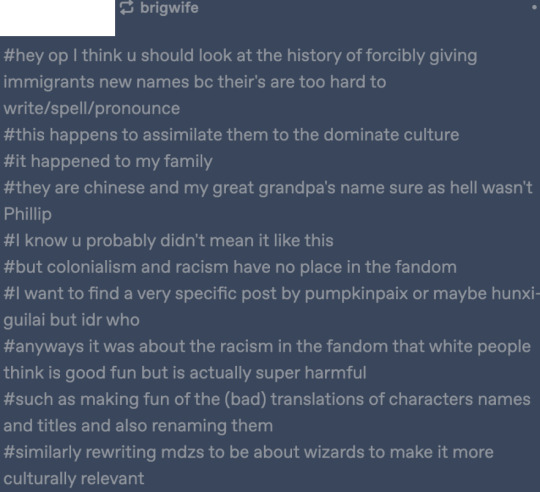
You can see that my comment assumed "good faith." However, OP deleted these comments and blocked me. (That didn't stop other people from calling it out as well, though I have to assume that if OP was so offended by my comment, the next few people will receive the same treatment.)
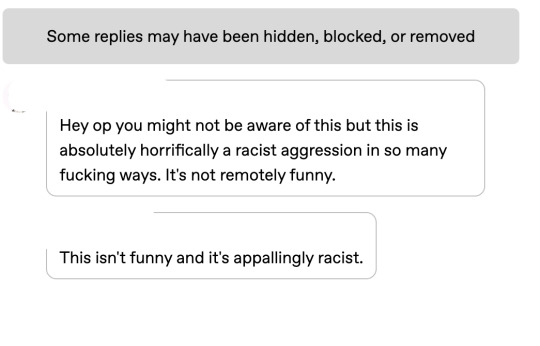
I honestly didn't like whipping up the diaspora statement -- that I wrote with multiple Chinese diaspora fans of MDZS, all of us hailing from multiple different countries and backgrounds, our ancestry coming from completely different regions of China -- because it meant that we were encountering another microaggression.
If you ever wonder why MDZS and danmei fandoms in general seem to be so bereft of Chinese diaspora voices, that's absolutely because of these microaggressions: Someone makes a joke, writes a story, writes some meta, that is culturally ignorant at best, offensive and harmful at worst, and when we gently correct them, explaining why it's racist, the person in question shuts us down, dismisses us, gets defensive, or worse.
Regardless of where you are -- fandom, social media, on the street, at work, at school -- as long as you are interacting with other people, your words matter and affect other people. That includes being racially offensive, even if you didn't intend to be. It's how you respond to the people you've insulted that reveals your character, how willing you are to be complicit in their mistreatment.
My rule of thumb has always been this -- if multiple people, including those of the culture you've just made a microaggressive joke about, find it unfunny, racist, or harmful, then you listen. Dismiss or ignore them, then yes -- you absolutely are racist.
#fandom racism#mdzs#mo dao zu shi#danmei#mxtx#wwx#mo xiang tong xiu#墨香铜臭#魔道祖师#魏无羡#耽美#asian drama#anti asian racism#chinese diaspora#tears falling like peridots#brigwife#cultural erasure#cql#chen qing ling#the untamed#陈情令
2K notes
·
View notes
Text
I'm bored so here's an itemized list of everything I like about Mondstadt as a German:
-I think it's really cool that it's the nation of freedom! Most people don't know this, but the first words of the anthem of Germany literally are "Unity and Justice and Freedom for the German fatherland". It's probably not intended by the dev team but I still thinks it cool! -Same goes for Mondstadt's history of having shaken off their oppressive nobility with revolution. Again most won't know this but there were actually multiple instances in German history where we had a whole movement to rebel against an oppressive class of nobility. Sadly most failed though unlike in Mondstadt. Props yet again not on purpose by the devs, still cool nonetheless. -Venti is a sweetie. Genuinly I love him so much, he's my favorite archon of all time. And in my honest opinion one of the (if not THE) best Archon. His nation is genuinely peaceful and just wouldn't even have needed the Traveller. The issue in Mondstadt was the Traveller messing up the situation with Dvalin which Venti had under control already. Would the Traveller not have been in Mondstadt all that starting cutscene with the two would have been the beginning and end of the whole affair. -The events all slay. -I enjoy that it has like- zero stereotypes involved! Which is honestly a rarity in media these day in terms of German rep. -It's so cool that Hoyo also included Switzerland and Austria for their inspirations. I think it's often forgotten, but all those nations are just as German as Germany itself. -Just.. I like a lot about the culture and the representation we got from there, okay? -Despite being the most "generic" fantasy nation in Genshin Mondstadt still has a wholly unique feeling to it. Most fans described it as "homey" from what I've seen, which I can definitely agree with! -It's genuinely the most wholesome nation ever like???? Despite being lead by a Knight Order and the church it's surprisingly chill and well balanced. If I had to bet Mondstadt probably has the best average quality of life out of all the other nations. -Personally I headcanon that Mondstadt is mostly based off of south Germany. Since that's the hilly part of the nation with the warmer weather, borders to the other two nations Mondstadt has inspiration from and also is the wine region of Germany. Having that part of the nation represented really is so refreshing! -Diluc is very pretty. -Kaeya is very pretty. -Venti is very pretty. -Unironically some of the most interesting lore in the game so far all seems to come from Mond! I'm really excited for what we can expect from there.
95 notes
·
View notes
Text
Gay Cheerleaders AU
Y'all knew it was coming.
I'm thinking Lena would be the... third(?) year veteran, who is a legacy. Her mom Lillian was also a cheerleader, and then became the head honcho in charge of the cheerleading division. Lena grew up with the expectation of eventually joining the organization as a dancer, and naturally becomes a group leader (the youngest 1st group leader in the history of the organization?) through her sense of responsibility, magnetism, and compassion, even if she remains a little distant-- she doesn't share her whole self with the team, as she's constantly aware of needing to present the image of a perfect cheerleader, a perfect leader.
Kara would be the rookie, immediately awed by Lena's performance during tryouts. She's not in Lena's group, but her own group leader faces some... personality challenges, lets say, that have Kara taking on more of a responsibility than would normally be allocated to a first year dancer.
But when Kara and Lena end up bumping into each other in the studio for some solo practice, they agree to share the space and work together. Of course they end up bonding, and those practices lead to coffees, lunches, some movie nights.
They eventually become the darlings of the team, inseperably so. Young fans try to catch glimpses of them standing together on the sidelines, loving to see Kara acting herself (aka goofy) and seeing Lena laughing in response. Behind the scenes they become romantically and sexually involved, but they keep it hidden because while it's not explicitly forbidden, they do cheer for a very conservative state, and they know it would impact not only their squad but the team overall.
In their day jobs, Lena is a children's dance teacher-- she wants to do more, but Lillian wants it for the community-service image it presents. Kara would be a fitness trainer I think, something lucrative but flexible and reflective of her athletic and exuberant nature whereas Lena is a bit more reserved.
Kara and Lena span multiple seasons/classes, and in the off season Lena pops up on Kara's instagram a little bit here and there, which only fuels the quiet online rumors about them. Like, the people who clock them are also queer in a conservative region of the country, so it's not a mass pop-culture phenomenon-- yet.
That all changes when one night Lena is grabbed inappropriately by a cameraman or other stadium employee, and can't manage to extricate herself despite her obvious and vocal discomfort. Kara sees red. She slugs the man right across the jaw with a proper right hook. The cameras had only just started to pan over to Lena's commotion and catches the exact moment Kara lunges for him and spins Lena out of his reach.
Kara is the champion/brute of the moment, depending on who's talking. Some laud her for both her protectiveness of her teammate and her technique, while others condemn her for unladylike vigilantism. Why didn't she let the security team deal with it, she serves a role model for young girls what is she teaching them the thug life?
Most importantly-- and most dire, perhaps-- is that it clues Lillian into the deeper nature of their relationship. She corners Lena, and interrogates her as Lena tries and tries to deflect. Lillian all but tells her that she'll be watching Lena through a microscope, and terrifies Lena to the point she breaks up with Kara in an attempt to protect her tenure with the organization.
Kara doesn't really care about all that, but when Lena says it's what she wants, she respects that. Until the team goes to the superbowl, and in the height of emotions at the winning touchdown, Lena forgets herself and throws her arms around Kara's neck and kisses her.
She's stunned at herself, horrified even, but before she can even try to apologize Kara recovers and kisses her again, this time long and slow. The cameras not on the players or stadium stands are focused on them, and the next day and weeks they are the only ones anyone can talk about, for better or worse.
Lillian uses Lena's next year, her fifth and final, as leverage. Apologize publicly for her lapse in judgement, confirm it was only ever friendship, condemn Kara for assault-- or she's out.
Lena listens calmly, then smoothly rises.
"Then I'm out."
She walks out without a second glance.
#supercorp#gay cheerleaders au#american football cheerleading is bizarre#but interesting#obvs this story would also be a commentary on the harm the industry does to its girls#and lena walking away would be a huge victory on so many level#inspired/informed by the dallas cowboys cheeleader documentary on netflix
181 notes
·
View notes
Text
In Which I Ramble About Pavitr's Character Design and the Indian Cultural Stuff Related to It
DISCLAIMER: I'm an Indian, and these are all my thoughts and analyses, but I'm also just one person and by no means am I speaking for everyone. I am not all knowing, and I am not immune to being wrong sometimes. These points are all my own thoughts and stuff that I know through my lived cultural experiences and some history and book knowledge, but I've not particularly researched any of these. I'm just out here giving my take from what I know. This is mostly just going to be me rambling, okay? Okay. Let's go!
Anyway okay so I just wanna go from the top down:
No. 1:
First of all his hair
His fucking hair
This is one aspect that i k n o w I'm overthinking and probably wasn't as significantly thought out in the design but it just Spoke to me and by all accounts I'm not the only one
But I'm so glad we have him with his thick gorgeous fricking hair, especially them being like curly/wavy and slightly long instead of straight and cropped or whatever
Like. Indians usually have very thick and luscious hair, not everyone ofc but generally it's a thing, and it's considered a point of pride to have long dark thick hair.
And the thing is for the longest time the beauty standard in India was to have very straight and shiny hair, all the actresses and heroes were doing it, even though that's literally not the realistic case for a lot lot LOT of Indians. There's a pretty big variety of hair texture in India; some of it is regionally concentrated too, eg. in South India you get a lot of frizzy, tightly coiled hair that's rough textured, whereas curly hair is usually silkier and looser curled as you go Northwards,, Bengalis tend to have very wavy thick hair,, etc. By no means a rule or anything, it's just a thing that there's a lot of curl variety and a lot of it was for the longest time considered ugly and unkempt (there are some classist/regionalist elements to this stereotype also unsurprisingly) still is by some people,,, bc the standard was Shiny Straight Hair. It's a standard that's slowly shifting. It's currently leaning more on the wavy and voluminous side. But it's def a thing still.
All that to say, it makes me so so happy to see Pav with his curly-ish lush hair that he wears with such pride and style,, that are a symbol of his own pride and self care too!!!
Also the line about "coconut oil, prayers and good genetics" - I LOVE THAT REFERENCE AHAHABSSK, using coconut oil for the hair is a very common thing here, it's so so good for the hair and the scalp alike and it's relaxing to massage it in too.
I've seen people try to write Pavitr in fics as "quickly brushing some coconut oil through his hair" as part of his morning routine and. Um. That's not how it's done askaskjas, I don't mean to be rude to the writers at all, everyone does the best with what they know and no one knows everything, but also practically speaking that would be greasy and awful.
There are multiple ways to apply coconut oil, ofc. Coconut oil is often massaged into the scalp and rubbed into the hair like an hour before washing, sometimes with lemon juice mixed in, and then washed off when bathing. Some people, especially those with drier and finer hair, apply it as a regular after-hair-wash thing, too, but even so it needs to be rubbed in.
A really beloved thing we have is coconut oil champis, too! This is basically when you sit down cross legged in front of youe mother/grandmother, and she massages the coconut oil into your scalp and hair in a way that literally cures all tension and headaches and leaves your head reeling and is so so good for hair and stress and everything. It's a family bonding thing more than just a hair routine. It's not always done by the mom/grandmother ofc, it's just how most of us first experience it, and they have a technique that none of us can ever quite replicate to the same effect later. As we grow up, we often do it for ourselves and for others. It's a weekly or monthly or even just occasional thing depending on who you ask. But yeah that reference was great I love it dearly!

Also about the hair length
So in the current modern "civilized" standard (Indian schools and society in general tend to do a lot of shit trying to assimilate us into western culture and stamp out our own,, for example all my life I've been in schools where speaking Hindi and Telugu and stuff in class or in the hallways was Wrong and Forbidden and We Must Speak Only In English Bc We Are Educated And Cultured. This is so fucking hypocritical bc they would also have Hindi and Telugu classes and then criticize us for not getting it right or whatever), boys are meant to have short hair. Teachers literally single boys out in class for leaving their hair longer, not the exact length they set as the limit. This was my entire school experience; thankfully it doesn't seem to be the case in college, but that may just be bc I'm in an artsy college. In the workplace it's less stringent but it's still a thing.
HOWEVER, historically and culturally, long hair was considered good and even Important for both men and women. There's huge regional variations in this ofc; Maratha peshwas and higher classes and stuff for example wore a "pilaka" (idk what else it's called), which is the head shaven clean except a tuft in the middle that's sometimes braided. Brahmins still do it too.
But my point being, long hair was considered good for the most part, at most it would be worn in a bun for fighting and working,,, braids are a pretty big deal too. Having to cut your hair short=a symbol of dishonour and/or exile, or reserved for menial workers and so called "low classes".
(This is not stuff you even get explicitly told btw. This is stuff I've mostly inferred and studied from history and mythology and stuff , so there's no guarantee I'm 100% right)
Also, in Sikkhism (I'm not Sikh myself so correct me if I'm wrong, this is just what I know) having long hair is super fucking important for men. The hair is wrapped up in the turban, and the turban is a symbol of honour and pride and literally considered life. The long hair is considered sacred.
Removing the turban is basically a symbol of literally losing your honour pride and sense of self,, not just in Sikkhism, just generally at this point. Cutting your hair? Insult on injury.
Pavitr doesn't have particularly long hair ofc
But having grown up with such rigidly enforced things abt boys having very short cropped hair, it makes me so happy to see an Indian character who defies that.
Also!! Quick tangent about braids and their significance,, they're considered very beautiful and another symbol of pride, intricate buns and what not too! Just wanna drop this to give you an idea of what i mean:
In the Hindu myth of the Mahabharata, Draupadi, the wife of the Pandavas (she's a very interesting and important and beloved character, regionally also considered a goddess, she was a princess born of fire married to five princes and the vengeance for her honour literally fuelled the war for righteousness etc etc) vows never to braid her hair again until she has washed it in the blood of Dushasana, a man who forcefully tried to disrobe her in court (it's a whole myth of its own). At the apex of the war, Bheem, her husband, brings her his blood. She washes her hair in it and then for the first time in thirteen years, she braids it.
Braids are not as significant now but it was basically a Pretty Big Deal and I just wanted to talk abt it.
In Hinduism too the gods are portrayed with long hair, it's a Thing.
No. 2:
Okay so moving more downwards,, I have a bunch of Thoughts abt Pavs mask design!

Okay so obv we have the spiderweb-pattern that's a given.
But. The interesting parts are these:
The bindi-like design on his forehead.
Bc my point is
Sure that looks like a bindi. And that's beautiful in itself but I HAVE ANOTHER TAKE
Bindis are traditionally worn by women as a symbol of beauty, prosperity, and again, pride. But while nice, that's not quite a symbolism that fits imo
You know what else is ver similar where my mind immediately goes? A tilak.
The shape is kind of off for a tilak actually, a tilak is more of a U or a V with a dot or a flame-like stroke in the middle. So in that case it looks more like a bindi
But i really like thinking that it's inspired by a tilak too, bc
While a bindi is a decorative mark stuck or painted on a woman's forehead as a symbol of beauty and prosperity
A tilak is basically a mark that's finger-painted on the forehead of , usually a man but there's a softer smaller version for women too and ofc there are women warriors who got tilaks, for auspicious and blessing reasons. So in a Puja or ceremony, a tilak is put as a blessing and an auspicious thing, also meant to impart strength. The head of the household usually gets the most striking or biggest one.
Pandits usually wear tilaks for blessing purposes too, although their design is different and more elaborate than the ones given to others
Gods and goddesses had their own tilaks, some of them very distinctive like Shiva's
The part that applies to Pav is the warrior tilak
Basically before a king or warrior went to battle, it was customary to do a small sending off ritual and for the wife or mother to put the tilak for them and say "Vijay bhava" (may you be victorious)
It's still done for big undertakings and challenges like exams and new jobs and stuff.
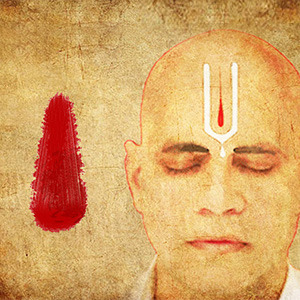
It's basically for strength, bravery and victory
The main difference in a bindi and tilak is the intent:
Bindi is for beauty
Tilak is for valour
Which. For a HERO. Just. Chef's kiss.
2. the markings around his eyes!!
I'm sure this has been said before, but it's very very reminiscent of kathakali makeup.
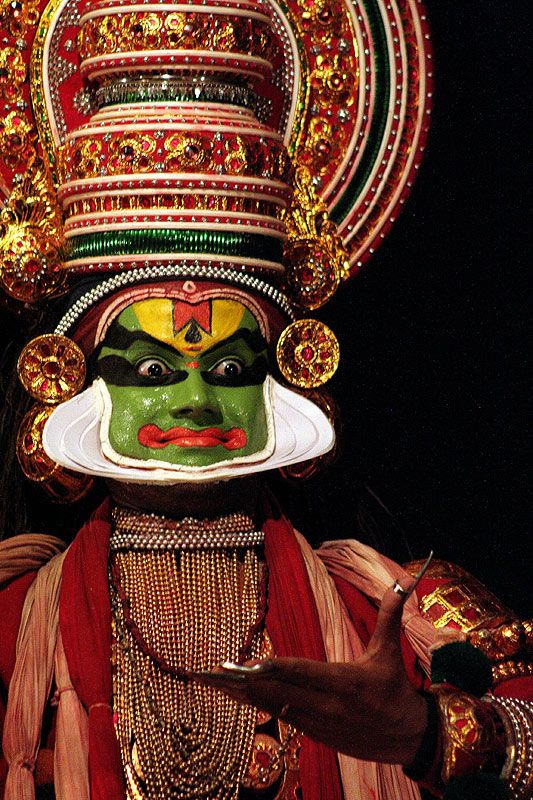
Regionally there's a lot of eye makeup stuff also btw. There are some absolutely beautiful tribal designs and regional designs with a lot of colours but I cant remember specifics rn
Also!! The very distinctive black lines around Pav's eyes?? I love them sm bc they feel so so based in kohl and kajal. Another huge beauty and often pride related thing.
There's even a whole thing where a mother or older sister will often rub a bit of her kohl off on her fingertip and press it behind their loved one's ear so that "buri nazar na lage" (no one's bad gaze catches you). It's called a kaala teeka
The idea being that you're so beautiful and/or cute and bright and lovable and nothing should jinx that and nothing bad should happen to you. It's very rare now and I've never experienced it myself but it's so so precious <33
3. the white markings on his cheeks!
I've seen that explanation of how it's reminiscent of Ganesha, the elephant headed god who is kind of a symbol of new beginnings, intelligence, prosperity, and a ton of stuff I don't even know how to explain honestly, but he's very cool and beloved and has a lot of Good Vibes™ and i love him basically.
I personally am reminded more of kathakali makeup again!! But that explanation is very cool too and i like it!! I don't know if I agree bc i think it m i g h t be a blasphemy to have that imagery on your face, afaik no one here does it for any reasons and we have literal festivals and pujas dedicated to Ganesha
But then again I am a human with limited knowledge and i don't know everything
I personally think the tusk like designs are very cool. However, I also think it would be a bit of a No No for religious reasons. I also think it reminds me more of classical dance face makeup and stuff.
I also think if they meant to make it a Ganesha reference, then he should only have a tusk on one side, bc there's a huge deal about Ganesha being "ekdanta" (transl: one toothed) bc he has a well known myth of breaking off one of his tusks to write a mythologically and culturally significant epic.
There are also a lot of actual cultural face painting things in India that are way cooler than the Ganesha thing in my opinion. So while that theory is cool, I don't personally agree with it. I could be wrong, again, idk what the design intent was exactly.
No. 3:
Next thing: this is a very very small thing and i only have a sentence on it, but i really appreciate Pav's neckline in his suit.
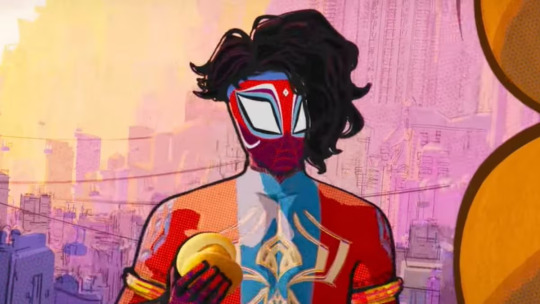
The neckline here? That's the kind of cut that's most typical of kurtas. Especially more ceremonial, kingly, wedding sherwani, or generally festive attire; a regular kurti might have a v-neck or something, but this curved collar? Very Indian and classy in a way I can't fully explain.
No. 4:
This next thing I'm going to go completely ballistic about, everyone hold on to your seats!!!
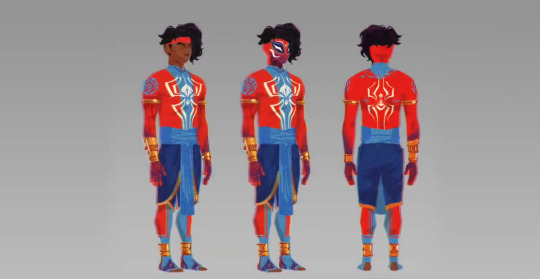
THE FUCKING MOTIF ON HIS UPPER ARMS. IT'S EVEN ON THE MEHENDI-ISH PATTERN ON HIS WRISTS AND HANDS. THE SPIDER SHAPE TOO. I AM NOT NORMAL OKAY
LISTEN.
LISTEN TO ME
TBIS IS CONFIRMATION THAT KRISHNA PAVITR IS CANON
HE IS SO SO KRISHNA CODED
Idc if I'm delusional, i DARE you to look at that blue design and tell me it doesn't look like a peacock feather
THE SHAPE OF HIS FUCKING SPIDER IS OH SO SUBTLY CURVED TO BE PEACOCK FEATHER SHAPED TOO
There is no human way for me to be normal about this i need a minute
Okay for context:
Krishna is a very important and beloved god in Hinduism. I cannot overstate the love I have for him, even being mostly non religious myself.
There is SO MUCH about him he is such a big deal and thanks to him being made a character in popular Indian cartoons and so many animated and live action movies being made about him, he is literally woven in the fabric of our collective consciousness and love for our culture
He's a mischevious and fun and chaotic and lowkey antiestablishment kid deity. He contains the literal universe. He has a deep abiding love for his people and his family and loved ones and the world he serves. He is a dancer, flute player, sweetheart, lover of life. He has a thousand wives, yet one Radha who he never married but is his literal immortalized soulmate. He guides heroes to duty. He is full of wisdom but also silly hijinks. He is so so beloved.
The peacock feather is his symbol! You could see the peacock feather anywhere and it's immediately OH KRISHNA! He wears a peacock feather, famously. In all his iterations, from childhood to adulthood. Peacock feather is his emblem.
Krishna is depicted through the peacock feather. It's become a very common motif in arts like mehendi and various textile arts to have peacock feather and peacock patterns; I'm sure that existed before Krishna too in several cultural circles but he is definitely a huge part of it since. There is a chikankari motif that is very recognisable that's reminiscent of peacock feather but I'm mostly unsourced on that, going off my own interpretation
But there's a definite link between peacock feather=Krishna=inextricable part of culture and art.
At least in North India. He's less of a big deal the further south you go. Still very widespread and overall loved tho.
So anyway seeing that peacock feather type motif on Pav?? Mixed with his Spiderman identity??? Is so amazing to me.
Krishna coded Pavitr real ✨
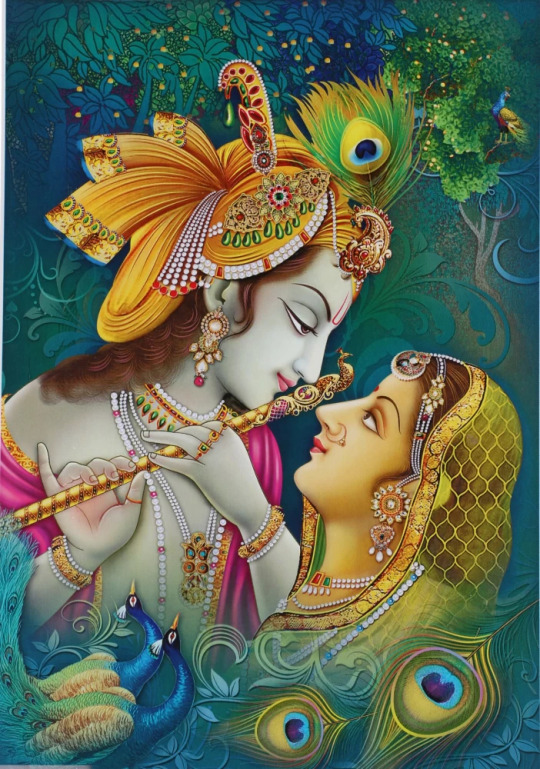
(Also yeah people have already pointed out that Pav's hand designs are based on mehendi so I don't need to go into that askjasjkas)
No. 5:
Also. Huge fan of his arm cuffs. It's just another Indian warrior thing; often in ye olde times and in mythology, the cuff would be a lot simpler, often just a thread with an amulet to grant you protection. But it steadily became fancier, and now it can be decorative or a valour thing or both
Very often just decorative now actually. Often seen in weddings and ceremonies too
No. 6:
Okay about his bangles now:
I absolutely LOVE THEM I love them so much I am so obsessed with them actually!!
So. First of all
I remember there being a confusion in like earlier fics especially on whether they were bracelets or damrus or bangles or what
And i have Thoughts
So first of all
They are not damrus/damarus.
Damarus are a musical instrument made of wood and with two beaded ropes to beat on the small drum-like ends. They're also symbols of lord Shiva who uses a damaru.
They are very different from what Pav wears and i remember my fucking whiplash when earlier fics called his bangles damarus. I think i choked on my maggi.
I don't mean to be rude to the writers ofc, they were doing the best with what they knew. But it's just very jarring to me to hear that
I think an explanation I heard was that Pav's web shooter design was inspired by damarus? Which yeah I get that and I actually wanna talk about it bc I very much see it. But they are very much NOT damarus themselves
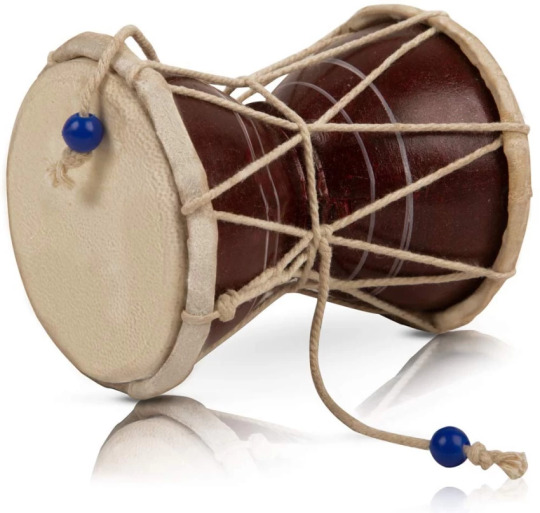
So
First of all i personally have never seen nor heard of the kind of bangles Pav wears which appear to have a strip of cloth in the middle? While being gold cuffs on both ends? Which is new and interesting actually and opens up aspects abt his character that i find really interesting
Bc first of all: that implies he made them himself from stuff he already had inspired by things he saw. It seems, at least to me, like he used bangles/kadas he had to make the shooters he uses, which are designed the way they are for easier slinging and his cool tricks with them which would be harder if they were solid gold, and also the shape when he does the cool yoyo-y trick and hits The Spot with it and everything is very damaru shape. Which is also pretty cool if it's meant as a reference to Shiva and his damaru (he's a very fierce god with the damaru) or a reference to the street performers who use it nowadays.
Either way - and also additionally the fact that PAV LITERALLY DOUBLED HIS BANGLES AS WEB SHOOTERS WHICH IS SO CREATIVE AND SMART - and developed his own whole signature skillset with it?? And made his own bangle/shooters as I said before????
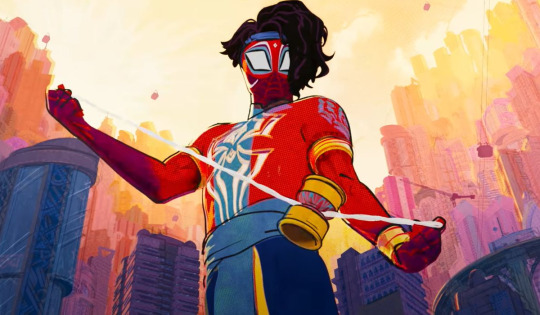
My boy is PEAK jugaadu
He is the embodiment of jugaad
Never has anything been so true to the Indian spirit than jugaad
Okay so for context, the jugaad that I keep talking about:
It basically means makeshifting and/or inventing stuff you need from the limited stuff you have. That's a very simple way of explaining it. Just imagine that, but up the silliness level x100.
For example, a guy jugaaded a showerhead by poking holes in a sprite bottle and putting a hose in it and routing it to the tap.
Jugaad can be both very smart, and very funny and silly
And it usually involves combining useless stuff/trash/just stuff you had lying around to make smth that you didn't wanna waste money buying, and often ends up having more functions than the stuff it was meant to replace. This but it's also very crackheaded. Like idk how to explain. It's basically makeshifting, but it's just developed into such an Indian Spirit Thing™ that we have a word for it
So i love that Pavitr's bangles do all of that. He is a true Indian boy to his core!
No. 7:
Okay I have thoughts on his dhoti too!
So.
Blue.
I know why they used blue for his dhoti, what with the spiderman colours, the need to complement his bright red with smth softer, and everything. I get it and i love it so so much. What I'm about to say next is not a complaint against this at all, it's very good design imo
But.
Everytime I look at him in his fucking blue dhoti
I just remember all the times my grandmother has apprehended me and made me go and change for trying to wear blue or black at a Puja
Bc they're apparently unholy colours ;_;
Basically yellow, saffron, red are the appropriate holy colours. Now that i think about it, I've never seen a god or mythological king depicted in a blue dhoti or generally blue clothing either - farthest they go from the three i described is pink or green
I never really thought about it until my Nani pointed it out. I'm still not sure if anyone except her even knew or cared about it.
But that is the memory that bonks me on the head every time i Perceive the blue dhoti
Bro upgraded from funeral colour (white, which is his dhoti in the comics and absolutely infuriates me on a visceral level) to unholy colour askaskjjska it's so funny to me
Purple was still a luxurious colour, but generally warmer and/or lighter colours are The Done Thing. It's an old notion and the cultural connotations are now very diluted by Western influence and also none of us Caring about a lot of it anymore (not necessarily a good or bad thing particularly)
Indigo also has. Loaded connotations.
Because Britain did a Colonialism and a lot of Indians suffered for it. It's a whole history lesson.
I would rather not get into the whole details but basically Indigo (the plant from which the dye was made) was a valuable commodity and Britishers essentially forced farmers to grow only that, ignoring their need to grow food or sustenance or care for the land in general, especially in the Bihar-UP regions. There were eventually a lot of revolts where many people, esp farmers, died.
Basically a double whammy of starvation and death as a direct result of colonialism. It was a major part, historically, that sparked rage for the freedom movement
If you wanna learn more abt it you can search up Champaran farmer revolts!
Also about the drape of Pav's dhoti:

I've seen a couple of memes and reels abt how Pav, in an emergency, suiting up for Spiderman duty, would be taking an hour to drape the dhoti and stuff
And those are hilarious and i love them
But also
That's literally not even a proper dhoti -
So the thing pav wears is basically more of dhoti-pants with a cummerbund.
So okay I need to explain this better hold on
A dhoti is basically a sheet of fabric that is draped around the waist and down. The elaborateness of the cloth can vary vastly from intricately patterned silk and brocade, to plain white cotton with a thin gold border optional
The drape of the dhoti varies even more depending on region, occasion, occupation, and status. You can have everything from the casual simple towel like drape and tuck that some men wear to relax on a daily basis, to an intricate thing with many folds and pleats and tucks and the middle part that hangs (I forget the name for that) that would actually legitimately take hours and is often adorned with jewellery . To a thing that's flexible to move in and also looks very pretty and is genderneutral some dance forms call for.
Basically. The drape varies vastly. And it's all one cloth, maybe a second one for a separate cummerbund sometimes, I'm not that well versed abt dhotis tbh.
But the thing Pav wears?? It doesn't seem to me to be folded the way I've ever seen any dhoti
The way it's folded and shaped is not how those style of dhotis work. There would be a lot more pleats and folds, for one. But it's not shaped the way to match the less-folded dhotis either.
Now, I'm no dhoti expert, but that leads me to believe that's not a full on dhoti. What it's more likely to be is dhoti-pants
Dhoti pants are this fusion thing. It's in the name. I haven't seen it much but I know/think/am pretty sure its a thing, bc most Indian guys now don't know how to drape a dhoti either and it's a good solution. Worn like a pant, looks like a dhoti. Simple. A cummerbund for the middle drape, and you're set!
Also side note: the fold with the distinct two legs and the middle drape that Pav has? Is the most commonly depicted warrior and king drape,, at least in North and Middle India, I'm not as well versed about the South but I think it's the case there too. The gods are depicted in that drape too
I have fewer comments on his leg design, I like that it's reminiscent of mehendi even on his feet bc yeah that's also done on the feet, although rarer now and also a bridal thing
No. 7:
He has gold cuffs on his ankles that I really like!
Okay so here's the interesting thing:
I could be wrong, but
But that kind of thick ankle cuff is not actually an Indian thing?? At least not in the warrior hero context that a lot of his design seems based on. At least not of that shape and width.
What we do have though are very simple metal ankle cuffs put on (I think) one ankle of young kids for protection,, again a tradition I'm not very familiar with, it's more localised
The other thing we have that's more interesting tho:
We have payals and ghungroos!!! Which opens up so many exciting prospects to me because those are both dancer things
Like. The payals are ornamental. They are beauty things as well. All women would wear them, their elaborateness and style depending on status, money, and region ofc
They double as dance and performance things too ofc
But ghungroos are specifically dance things
Very very sacred and honoured to the dancers, too. Quite personal
(These are all little bells on the ghungroos btw!! Hundreds of them. They ring out when the dancers dance)
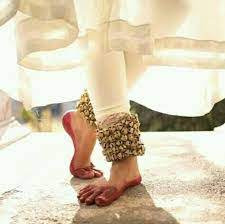
This is what Pav's ankle cuffs most remind me of. It's not the same thing ofc, and idk if the designers were even thinking of this.
But it would be really cool if he was inspired by ghungroos to have cuffs of similar thickness and placement on his legs. Perhaps even familiar to him hmmm?
This is me theorizing HARD to support my headcanon, but combined with Pav's classical dance-n-martial-arts-y moves, i present to you: Pav learning classical dance when he was younger (a thing that a lot of Indian kids do and only a few seriously continue for their lives) is real.
I rest my case
Like yeah it's known at this point that Pav's moves are based a lot off the martial art of kalaripayattu. Which is SO AMAZING AND I LOVE IT SO MUCH!!! But I also think this would be a cool influence alongside that, bc it really feels visible too.
No. 8:
The fact that Pavitr is barefoot is so so important and dear to me!!!
In Indian culture, you're supposed to take your shoes off as a mark of respect, before entering the ranabhoomi (literal transl: battleground, but not in an actual war with swords and shit ofc)
Being barefoot for pujas and in temples and on sacred ground in general is very important
As is being barefoot when you're walking onto a kabaddi or wrestling ground,, basically any fight that's supposed to be important and/or with honour. It's a respect thing for the opponent and for the earth you fight on.
There are a lot of contexts where being barefoot is important or a given
There's the prayer ground bc it's sacred and holy and you can't be dragging your dirty ass shoes there it's super disrespectful. You gotta enter with clean feet specifically, dirty feet are considered disrespectful too. that's also why there wil often be feet washing areas outside of temples here
Then there's the ranabhoomi that I just said, which is more of respect for your opponent and the earth. Respect to the earth especially is very important in the combat forms and sports I know of at least
Then there's the basic respect and tbh the hygiene thing too, of always taking off your footwear before entering another persons house. That one is more flexible, sometimes you can take it off inside, but the done thing is to take them off outside generally. Especially if you're a guest who's not particularly close. You'd be considered really rude if you didn't take them off at all. But again that still varies by person,, the older generations are way stricter abt it
Then the bride thing,,, it's actually a whole small ritual. The bride and groom will enter the groom's house for the first time,, which is considered the bride's new home bc misogynistic tradition so yeah. But basically it's supposed to be an auspicious beginning to a new home and life. (Btw being barefoot during the wedding ceremony is also generally required)
Usually, at least in North Indian tradition, a small vessel of rice is kept at the threshold that the bride must tip over with her foot when entering. It's for prosperity. Then she steps directly into a plate of a red liquid I forget the word for, but it's basically a sindoor paste type of thing. Her first steps into the house must be taken leaving those red footprints behind. That's for auspicious beginning
So Pavitr being barefoot is so so cool from a cultural and a character building standpoint
He takes his job seriously, he does it with respect and honour!!! He seems so chill and happy go lucky, but he's deliberate and respectful abt it!! And he's super connected to his culture too, bc you could just Not and no one would care, but it's so important that he does!!
So yeah!
That has been my full ramble askjasjkas. If you made it this far, have a cookie! Thank you and I hope this was interesting <33
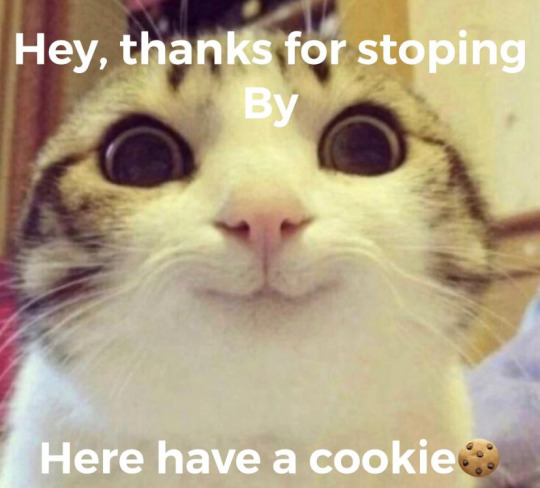
#pavitr prabhakar#atsv pavitr#spiderverse pavitr#spiderman atsv#across the spiderverse#spider man: across the spider verse#character design#rant#starr rambles#analysis#design analysis#character analysis#culture#indian culture#cultural references#pavitr my beloved#myths and legends#chaipunk#goldenpunk#spiderman india#india love#indian#long post
564 notes
·
View notes
Note
hei. i enjoy your blogs, i hope you could clear something up for me., i just saw someone claim to be "zionist as in i believe jewish people have the right to self determination in their indigenous homeland",, ive actually seen the claim that jewish ppl are indigenous to israel and are somehow denied that identity as a form of anti semitism and erasure of jewish experience multiple times.. and it always confused me so much cuz like israel was set up as this nationalist project in 1948, before the region was a mess mostly under the rule of the ottomans, but the palestinian culture and ppl were always there. how can someone be indigenous to a region if they werent there before? is there any truth to the claim or is it just co-opting leftist language again?
its so evil how the state of israel could jist completely legitimize itself by co-opting jewish culture and pretending like being in support of it is a fundamental part of jewishness :(
Thank you!! I'm glad you do.
I can try, but I'm not sure how good I'll be at explaining this. Maybe someone else can add to this. If I repeat things I said before, I apologize.
That is a definition of zionism used by many zionists who lean politically to the left. I don't subscribe to these softer definitions of zionism because saying it's just "the right to Jewish self determination in our ancestral homeland" ignores that in practice over the last century the next words are "to the exclusion of others." I define zionism through its practical outcome - which is what we did to Palestinians.
Jewish people originate here. Our religious laws and practices (many of which are regularly disregarded by Israel and by settlers when they do things like destroying olive trees and water sources) are tied to this specific land. There are holidays and religious rituals that are either fundamentally changed or can't be practiced at all if we're anywhere else in the world. Culturally most branches of Judaism maintained this connection throughout our history. And we didn't leave willingly. An empire expelled us from the place that was our land. When the point of indigeniety comes up, this is why. You'll see arguments like - when does indigeniety expire? How many generations until you no longer have a claim to the ancestral homeland you were driven away from?
So this is the cultural context for Judaism. This is something that I also can't really ignore. I can't pretend I don't care about this land and the connection we always had to it.
That said, I still see this as using leftist terminology inappropriately.
To talk about Israel, a lot of us talk about colonialism, and specifically settler colonialism. I lived in the West Bank settlements so to me this really resonates. The argument I get at that point is that an indigenous group can't colonize their own land.
And this is why I'm saying it's a misuse of terminology. We're using that label to absolve ourselves. As if the word "indigenous" is a stamp of approval we get to apply to our actions while we repeat the violence of colonizing forces in history.
Ethnic cleansing, occupation, building settlements - and now also genocide. The tools we use resonate with indigenous people all over the world, because they suffered through similar kinds of oppression. Always with differences and different contexts, these things are never 1:1, but there's a reason indigenous groups around the world are in solidarity with Palestinians. I shared about a video from a Korean person talking about how colonialism by Japan broke the thread of their history - old buildings that had to be rebuilt instead of being preserved, historical cultural practices and art forms being lost or changed due to the loss of artisans. These are things Israel is doing now.
So to me, this is using the word "landback" and "liberation" for a violent takeover of land from an indigenous group. You mentioned the Ottomans - Palestine has been conquered over and over throughout history. Those regimes, sure, fighting them off can be liberatory, if the intent isn't to become the conquerors in their place. But there's nothing to liberate from Palestinians, because they're not colonizing anything. They belong in this land.
I'm really angry that so many of us try to deny the Palestinians their own connection. They have roots here, a long and rich history shaped by life in the land. While we destroy so much and say our claim is so strong we get to kill or drive them away for it.
203 notes
·
View notes
Text
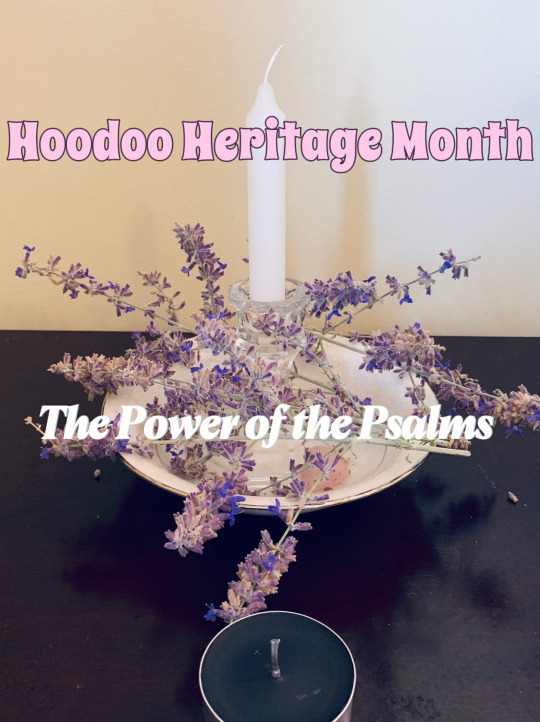
BIBLIOMANCY: THE PSALMS 📖🔮🕯️
During the many centuries of American history, Black African Americans had contact with various different religions and ethnic cultures ie; multiple Indigenous Tribes, Jews, Appalachians, Dutch, Swedes, Caribbeans, Haitian Kreyols and many more, through the Chattel Transatlantic Trade an land migration. These pivotal interactions are introduced the assimilation of many ritual practices. Hoodoo is a multiculturally mixed practice, with many nuances and intersections. It reflects the attitude and practices of many different generations, cultivated, passed down and preserved. While purists believe in keeping Hoodoo strictly traditional, the realist and preservationists, see Hoodoo as a constantly evolving and cunning art form, always adaptable to the times. Throughout the 1600 - 1900s, multiple different denominations of the Abrahamic faiths were wide spread through the United States influencing Black American folk magic and way of life.
Bibliomancy was already a common folk practice at and slowly making into the consciousness of Black American folk Magick.
The first book printed in North America to contain the psalms was The Bay Psalm Book, published in 1640 in Cambridge, Massachusetts by Minister an Planation Owner, Joseph Glover, who was well known for being the pioneer of printing in the English colonies and was one of the co-founders of Harvard University. Without sufficient historical evidence we can only speculate that this is the it’s one possible origins of the usage of the psalms in Black American Folk Magick. Glover was a Rector aka a parish priest for the Church of England and was decently educated. It is highly likely during his studies in England he had access to Jewish Psalm Prayer Books which inspired him to publish one of his own, when he came to America. There were also a small afro-jewish populations and various intersectional social connections with the black community, with the Jewish, Catholic and other various Christian religious denominations that were also clear influences.
The Church was a place of indoctrination but also social relief, community and emotional escapism for Black Americans during these times. Throughout the centuries the Indoctrination of the Church became the only source of solace and safety for Black American mental health & society during ever shifty and dangerous social climates. Deeply imbedding itself into consciousness of the black community, subconsciously and consciously, which we can still see in modern times.
As the ability to read and write increased within the black community, in addition to the growth of printing more books access to reading the Bible and the Psalms became easier and easier. Now the Psalms were seen as a powerful book of spells in African American folk magick, with a multitude of different uses. Psalms could be scratched in the mud, written on doorways, or just simply spoken or prayed over folks, tools, plant allies, talismans, mojo bags, roots, other items, water, candles and more. The intent could be love, justice, abundance, peace and even hexing. Eventually, this belief trickled down to usage of other verses, from other Bible, an influenced African American communities, all over the country. Each community like their own little tribes, some with similar or different practices and rituals, regionally.
In practice, The power of the psalms was unmatched, people swore by it by its success rate and still do to this day, which is why the practice has stuck in modern times.
The Psalms were a vehicle of rejuvenation and life, these scriptures were considered living words of power. I’ll go into the sacred mythos behind that, for members of my Patreon, later on this month.
For some Black Americans it’s easy to overlook and even discard the power of bibliomancy especially when they have deep religious trauma when it comes to any Abrahamic faith (Baptist, Catholic, Christian, Cogic etc) which is understandable. These feelings are valid & practicing Hoodoo, means understanding the many intricate nuances of the intersection and history of this folk culture. Others also see the value in Bibliomancy and continue this ancestral practice in modern times, knowing two things can be true at once. There is a great deal of duality in Hoodoo, which is something many of us have come to accept and honor at the same time. Respecting this balance demands a deep sense of self and cultural respect, a discerning eye and great deal of empathy, whether practitioners like it or not.
Using the Psalms is a powerfully easy way to reconnect and heal with ancestral Black American practices and medicine. It’s not a requirement of course, but it’s fun to encourage other black Americans to practice and discover all of its hidden powers. Many African folk practices, were hidden out of survival, requiring a level of covert cunning. Bibliomancy was a clever way hide in plain sight without attracting too much attention. Think of our ancestors as secret agents of truth, justice with a covert strategic mentality that still has important place in modern times. Some magick requires a keen mind, good sense, without calling any attention to itself, teaching us the practice of self control and discipline. This is why the practice of bibliomancy is important, allowing you to tap into this energy and honor your ancestors and yourself.

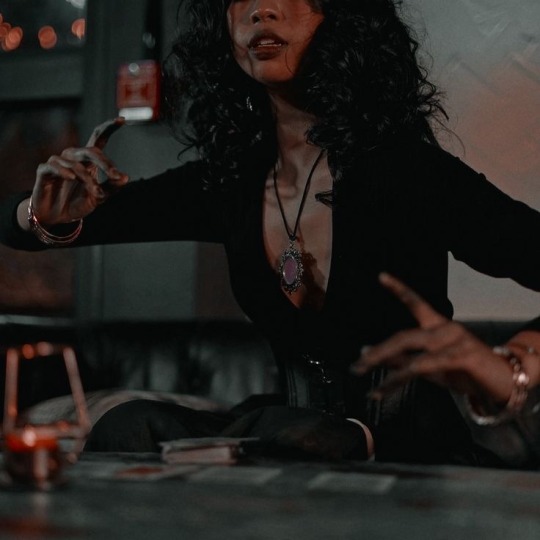
Examples of Bibliomancy
Psalms 54 - Help In Times Of Need. Mastering Negative Thoughts, Revenge Against Enemies.
Psalms 60 - Put The Past Behind You.
Psalms 41 - Help With Money Troubles
Psalms 23 - Protection, Abundance, Stability & Healing
HAPPY HOODOO HERITAGE MONTH ✨
🕯️🕯️🕯️
#hoodoo#salem#black community#black culture#black history#hoodoo community#psalms#bibliomancy#witches of color#black spirituality#spirituality#witch community#witchcraft#african american history#folk magick#occult#jewitch#rootworker#witchesofcolor#black americans#black witches#pagans of tumblr#witchblr#conjure#black american history#black american culture#black femininity#pagan community#witch history#hoodoo heritage month
31 notes
·
View notes
Text





Traditional women's dress in Bylaea. Left to right: Rodi-Byla, Saloche, Varkhata-Byla, Uswa-Byla, and Ugarre-Byla
Bylaea is a large island to the north, predominantly inhabited by humans and elowey organized into five major nations. Four speak a shared Bylaean language and share a close degree of cultural ancestry (those who use the '-Byla' suffix, meaning 'folk'). The Saloche are the only exception, who are not originally from this land and have gradually immigrated over a period of centuries.
Bylaeans are heavily interspecies peoples. Varkhata-Byla kin structure is unique in its fundamental dependency on having both human and elowey members in a clan, but all Bylaeans draw little to no fundamental distinction between the species, and share a belief that humans and elowey were once the same.
----

A rough map of Bylaea showing the approximate territories of each people
Varkhata-Byla: A human and elowey people who occupy the northern coasts and the surrounding lands, and depend heavily on the sea for sustenance. They are the most prolific sailors and traders of all Bylaeans, and have the largest population outside of their homeland. They believe themselves to be the first people of Bylaea, and that all others (aside from the Saloche) are their descendants. This has historically manifested in various degrees of territorial paternalism and aggression, as some believe that Bylaea should belong to the Varkhata entirely. Their relation with all other nations tends to be testy and Varkhata clans rarely marry outside of their people.
(Design notes- this is a bridal dress. It contains gold and silver, precious metals mostly acquired in trade from off the island)
Rodi-Byla: A human people. The Rodi are the most populous Bylaeans, occupying the rainforests and mountains of the south-southeast. The Rodi credit themselves as the inventors and masters of the ski, which is vital to hunting efforts in the winter. The Rodi are also the most intensive agriculturalists, and have cleared away large swaths of rainforest for crops. They have been introduced to the domestic moose of Ursval in recent history, and are its most enthusiastic adopters in Bylaea.
(Design notes- Braiding and tying one's hair into a mock beard is a common hairstyle for Rodi women. She also wears a moose and boar tooth necklace, and a jacket depicting geese- all culturally significant animals to the Rodi)
Ugarre-Byla: A predominantly human people who claim most of the coastline of the Goosefeather Gulf and the Gulf's waters. They have a testy history with the Varkhata and have fought multiple wars over the north coast of the Goosefeather, but have a generally positive trade relation with the Rodi and frequently intermarry.
(Design notes- this necklace is made of polished coral. Ugarre women of marriageable age shave their eyebrows )
Uswa-Byla: An elowey people who live mostly along the Great Salmon River, with populations scattered sparsely across the marshy southwest of Bylaea. The Uswa rely heavily on the rivers, lakes, and swamps in their territory for sustenance, and are uniquely poised to exploit it given the physiological adaptation to water found in northern elowey populations. They have historically skirmished with the Varkhata, and have positioned themselves as allies to the Saloche in recent centuries.
(Design notes- This woman wears paint to emphasize bare areas of facial skin, which is considered attractive. Mother of pearl beads and buttons are sewn into her clothing. This headdress is particularly elaborate and would likely be worn at a wedding or festival.)
Saloche: A human people from across the northern sea. The Saloche homeland was a relatively small island to the north, which has been slowly swallowed by the sea over the past millenia. They started migrating a few centuries back, and settled primarily into mountainous regions that were not heavily occupied, though land conflicts are frequent with the Varkhata-Byla in particular. They do not share a common language with other Bylaeans and do not refer to themselves with the -Byla ('folk') suffix. Saloche migrants also reached the Moorlands (island chain southwest of Bylaea) and parts of the northern Dainlands.
(Design notes- This woman wears a traditional feathered hood made from crow and flightless grouse feathers. Saloche women shave their heads.)
310 notes
·
View notes
Note
Wait, are you Pro-Palestine?
...........……………………………......................yes?
I had really hoped that was obvious from my FAQ/About that I require all new followers to read, but here it is for your convenience:
I think both Jews and Palestinians deserve to live in peace, safety, freedom, and self-determination for both. I’m not so arrogant as to think I know the best solution for how to accomplish that, seeing as I don’t live there myself. But my values are humanitarian across the board, which besides basic safety includes respecting cultural needs and access to important religious sites.
And an update in light of Current Events:
***Update post-10/7/23: Please read this article, this guide, and this theory of change, and consider becoming a friend of Standing Together. This is a group that truly cares about creating a just society that recognizes both peoples’ deep roots in the region, legitimate grievances, and the truth of history. They are the ones doing the hard work on the ground to create a lasting and just peace together. No one is going anywhere; any real solution must recognize that.
And look anon, idk if you're Jewish or not, but if you're not: don't do this. I put myself out there because I'm physically incapable of shutting up but a lot of Jews don't and it's not your place to ask them. I care about Palestinians because I care about human rights. I also care about Israelis because they are also humans whose rights I care about.
If you're a fellow Jew who is feeling betrayed somehow? Don't do that either. I care fiercely about our people and that is precisely why I want us to do better. I can care about multiple issues and multiple groups of people at the same time, no matter how many times people try to offer me an ultimatum or get upset with me. ¯\_(ツ)_/¯
Anyway none of this is a change in my positions or should come as a surprise to anyone if you actually read my required pinned post.
#terrified about what the notes on this are gonna be but#oh well#don't be the person who makes me lock reblogs#i/p#המצב
143 notes
·
View notes
Text
Harad Through Fandom Eyes
Plenty of people acknowledge that LOTR's Haradrim, Easterlings and Variags are racist. However, I've seen less discussion about how fandom adds even more racism into the mix. This seems to be mostly because many people have very little knowledge about West Asia and North Africa, aka WANA [Why say WANA/SWANA instead of Middle East?] and what anti-WANA racism looks like.
I'm going to focus on Harad because this is the region that we know the most about. If you need a brief refresher:
Harad, or Haradwaith, is the region south of Gondor. There's a long history of violence between Harad and Gondor which dates back beyond Gondor even existed, to when Numenorians colonised Harad and repressed the people. Since then there were multiple wars and for long periods of time Gondor occupied parts of Harad. The Haradrim fight for Sauron in LoTR, partially due to their hatred of Gondor.
Harad is divided into two. Near Harad is strongly North Africa coded, and Far Harad is sub-Saharan Africa coded.

(Image description in alt text.)
Tolkien uses multiple different names to refer to the people of Harad (Haradrim, Southrons, Swertings, etc.) However, these seem to be the people of Near Harad, who he differentiates from the people of Far Harad. (There's some serious anti-blackness in this next quote, so skip over it if you need to. I only put it here as evidence that the use of Haradrim/Southrons in LOTR refers to Near Haradrim.)
[...] Easterlings with axes, and Variags of Khand, Southrons in scarlet, and out of Far Harad black men like half-trolls with white eyes and red tongues. - Return of the King
There is more to say on this than I would be able to fit into this post. There's a discussion to be had about Tolkien's textual and real life relationship with Black people. There's also a discussion that needs to be had about how Tolkien's racism is often excused with the idea that he was a 'benevolent' or well-meaning racist, a product of his time. It's an excuse that ignores the violence of quotations like this and the way that he wielded his whiteness against Black people in academia and writing.
I don't have time or space for those discussions in this post, but I want to acknowledge them.
What I want to discuss here is fandom portrayals of Haradrim. I'm not going to talk too much about the in-text racism, because that has been extensively covered elsewhere. But in summary:
The idea of the good white guys conquering the lesser brown 'Men of Darkness' is inherently racist
Tolkien's description of the Haradrim, such as repeatedly describing them as a cruel and warlike people, is also racist
The one paragraph where Samwise feels empathy for a dead Haradrim soldier does not lessen the racism.
With that out of the way, let's talk about fandom.
There's a gaping void in the information we're given about the Haradrim, so of course fandom attempts to fill the gaps. Fans often take inspiration from WANA. But many fans don't actually know that much about WANA and don't realise how much of their perception of it is based on racist and imperialist propaganda.
In fannish depictions, Harad all too frequently becomes an exotified fantasy that pulls from Western perceptions of WANA. Orientalist ideals of a mystical, magical, and yet dangerous place predominate the fannish idea of Harad.
The first thing that you should know about WANA is that it's an extremely culturally, religiously and geographically diverse place. If your depiction of Harad is entirely desert, or made of a culturally homogenous people with a narrow range of skin tones and features, you need to expand that. Equally, depictions of Harad as more 'socially backward' than other areas of Middle Earth stem directly from racist propaganda.
Too many stories write Harad as misogynistic and homophobic, often in direct contrast to other areas of Middle Earth. As many WANA people have pointed out, these kinds of sweeping generalisations are often specifically targeted at WANA because of racism.
Mysterious cursed objects from the 'far away lands of Harad', decadent sultans, the fetishization of cultural practices like belly dancing; these are all forms of Orientalism. Female characters may be sexualised, shown as seductresses or members of harems. (By the way, Westerners tend to have a very incorrect understanding of what harems actually are/were. They were the part of a Muslim household reserved for women and pre-pubescent boys. It was outsiders who perceived them as fundamentally sexual spaces and created the modern tropes of sexual harems.)
Male characters may be violent, cunning, greedy, dangerous and strange. There may be public executions and enslaved peoples, regardless of the complete absence of a textual basis. All of these things stem directly from racist ideas of WANA as 'barbaric' and 'uncivilised'.
In fact, Haradrim were once enslaved by Numenorians. They were victims of violent colonisation that continued into the days of Gondor. They have every reason to hate the 'Men of the West' and fight against them.
On a final note, the most major and dangerous WANA stereotype is the portrayal of WANA people as terrorists. This isn't a trope seen in Tolkien's works because it's primarily a post-911 phenomenon. But it's something that you must be conscious of if you're writing about Harad or other WANA-coded regions.
178 notes
·
View notes
Photo

Chaco Canyon
Chaco Canyon was the center of a pre-Columbian civilization flourishing in the San Juan Basin of the American Southwest from the 9th to the 12th century CE. Chacoan civilization represents a singular period in the history of an ancient people now referred to as "Ancestral Puebloans" given their relation to modern indigenous peoples of the Southwest whose lives are organized around Pueblos, or apartment-style communal dwellings.
Chacoans built epic works of public architecture which were without precedent in the prehistoric North American world and which remained unparalleled in size and complexity until historic times - a feat which required long-term planning and significant social organization. Precise alignment of these buildings with the cardinal directions and with the cyclical positions of the sun and moon, along with an abundance of exotic trade items found within these buildings, serve as an indication that Chaco was an advanced society with deep spiritual connections to the surrounding landscape.
Making this cultural fluorescence all the more remarkable is that it took place in the high-altitude semi-arid desert of the Colorado Plateau where even survival marks an accomplishment and that the long-term planning and organization it involved was carried out without a written language. This lack of a written record also contributes to a certain mystique surrounding Chaco - with evidence limited to objects and structures left behind, many tantalizingly significant questions about Chacoan society remain only partially answered despite decades of study.
Early Settlement
The first evidence of long-term human settlement in Chaco Canyon dates to the 3rd century CE with the construction of partially subterranean homes known as pithouses, structures which eventually were clustered together to form large villages. As inhabitants became increasingly integrated, single-story multi-room buildings began to appear in the 8th century CE among pithouse villages. Then, c. 850 CE, a remarkable change in Chacoan architecture began to take place which set it apart from that of any other Southwestern area. Whereas most contemporary buildings in the region contained less than ten rooms and were built out of wooden posts and adobe, Chacoans began to construct "great houses," colossal sandstone masonry structures which used thick walls to support multiple stories and hundreds of rooms. What it was that prompted such a dramatic and labor-intensive shift remains unknown today.
Continue reading...
29 notes
·
View notes
Text
ultimately while i adore tristrat beyond belief it does fall into genre typical prejudices that are not any more egregious than its genre compatriots but nonetheless worth adressing as a flaw in the game's worldbuilding and a cheap shot against its storytelling
tldr: frederica should've been black
tristrat excels in actually meaningfully examining prejudice and slavery under a more critical eye than "it's bad, don't do it," mainly that it explores the actual reasoning of it. namely that oppressors do reap benefits from the oppression they enact - here the oppression of the roselle is the key pillar to hyzante's prosperity. first, the roselle are a cheap workforce for backbreaking labor no one is willing to enact themselves. the hyzantians can turn to more leisurely and educated pursuits in science while ignoring the reality of hard labor. secondly the oppression of the roselle's history allows hyzante a monopoly on a precious resource, salt, which it uses rosellan labor to extract.
cheap labor + monopoly on the land's resources = profit
the motif of "the rosellan people are hated by the goddess and must forever atone for their sins" was then posed in retrospect as a justification for hyzante's stranglehold on resources, which then seeped into the culture and teachings of the country until the roselle were naught but sinners.
the roselle are light skinned and the hyzantians are arabs.
fuck, even the good hyzantians are light skinned. there are two dark skinned playable hyzantian characters (geela and quahag), whereas there are three playble light skinned hyzantians (archibald, corentin, medina), and one dark skinned non-hyzantian character (hossbara). Of note here is that quahag is literally one of tge three last characters you can unlock, and Geela is the only dark skinned main character (compared to 6 light skinned characters)
Frederica's story and her frustrations ring incredibly true to real world struggles for liberty (e.g. the people being exploited for lithium in congo, the blm movement), especially in frederica's mounting frustrations that she keeps being told to "wait just a bit longer". It is never the right time for her people to stop being slaves because the ruling class have other things to do first, when she knows more of her people are dying every single goddamn day. This anger being portrayed as rightous, being a core driving force of lategame plot, and being rightfully enacted in the golden route is rather novel for video games, mainly for ones i've seen.
I also appreciate the dive into religion as a tool of oppression - it is never relevant whether the Goddess actually exists. It is only relevant that faith in her and her teachings is used to chain the Roselle.
And yet Frederica's story rings just a tad hollow with her being as snow-white as all the rest - her struggle speaks deeply to POC using a white person as a mouthpiece, much how POC struggle to find respect unless a white person points the prejudice out first, regardless of how long and loudly POC were advocating for themselves first.
Tristrat falls into that same trap of ultimately having the rightous white defeat the dastardly arab. When really, there is no real reason the Roselle and other Hyzantian characters should not be as dark skinned as the rest. Even in real life, skin color is not the only axis of oppression, and you'll find no shortage of examples in the SWANA region that the west would both consider POC, because the label of POC only really holds any value in the west, where whiteness represents the cultural majority.
I bring this up not to say POC naturally oppress each other, but to illustrate that Tristrat's real world implications draw on a "reverse racism" angle - white people being enslaved by brown people, as it absolutely has not been for all of human history in any systemic measure. And this angle could've been entirely avoided by not making the Roselle white.
Additionally, Hyzante, again, the only country with multiple POC, is portrayed as the most villanous, particularly in the endgame and golden route. Isodore, Hyzante's religious leader, is the final boss of the golden route. With Hyzante being the only religious country as well, it brings to mind the demonization of Islam as a uniquely oppressive force when any religion can and has been used to the same end. Islam is not unique in this and should not be demonized for Islamic regimes, just as Christianity is largely not demonized for its use in justifying imperialism.
The imperialist capitalist force is of course represented by Aesfrost and Gustadolph, who believes in the free hand of the market. I have less to say on this than the whole Hyzante thing though I do find an examination of Aesfrost as capitalist and Hyzante as communist interesting. The worst of both worlds, obviously, with the unified Norzelia deciding to share all resources freely between all countries as needed representing something of a socialist dream.
Anyways, it's odd to me that Gustadolph is more or less a stepping stone in the Golden Ending compared to Isodore, when Gustadolph's conquest of Glenbrook is the catalyst for all events of the game. Again earlygame it's all against Aesfrost, with the player even allying with Hyzante by either force or choice depending on the route, yet the leaf turns the entire other way to ally with Aesfrost against Hyzante.
Maybe it's a JRPG prediliction to god killing but it is overall something to note that Hyzante is the final villain, meaning the villain most likely to stick in the player's memory.
I think I ran out of words I think my point got across. Tristrat handles the subject incredibly well and in nuance yet the ties to actual reality are muddled, weakened, and opposed by the character design which ultimately ends with the white people being in the right to defeat the evil arabs when this could've been avoided by making the Roselle POC as well, as they should really be by geographical logic, and it would've allowed Frederica's character much greater real world resonance.
Also sidenote it's fatphobic that the fat characters are all greedy moneygrubbers (Lionel, Sorsley, Silvio) even if Lionel is one of the good guys.
That's all goodnight
43 notes
·
View notes
Text
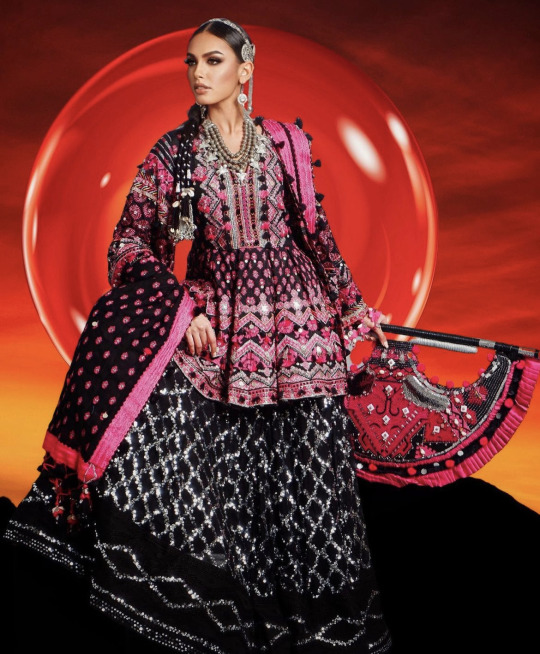

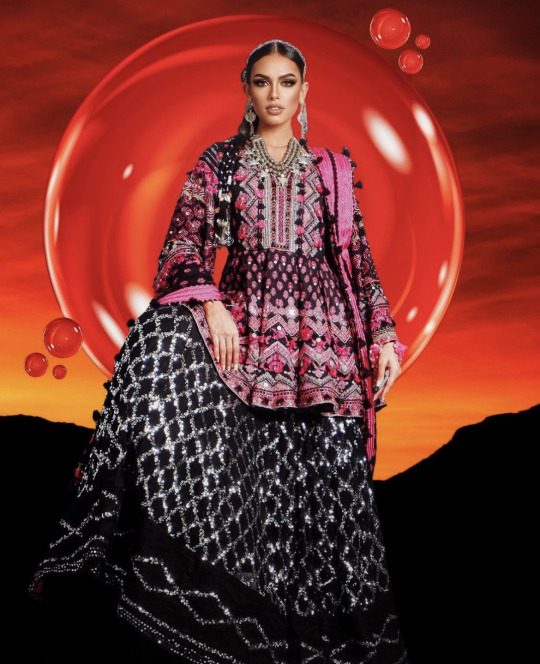
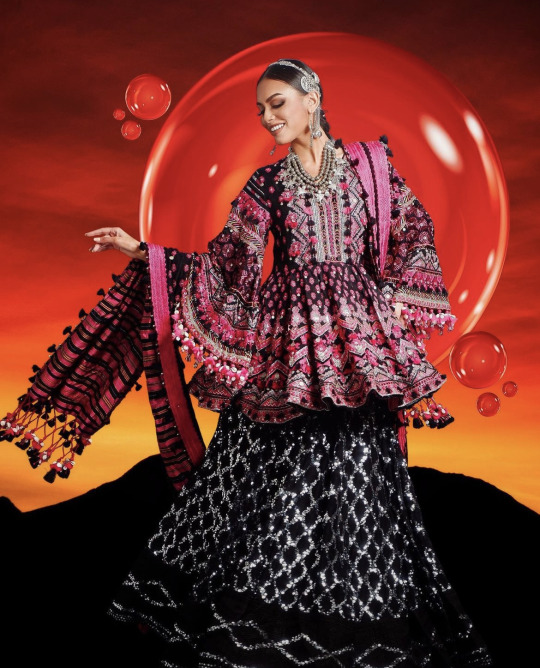

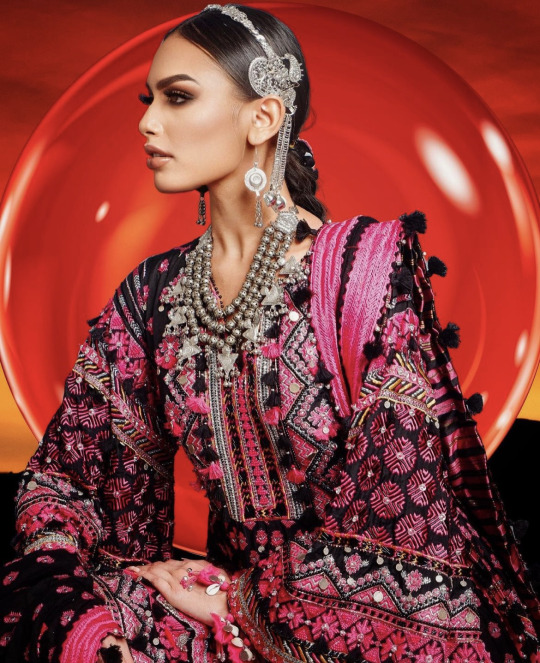
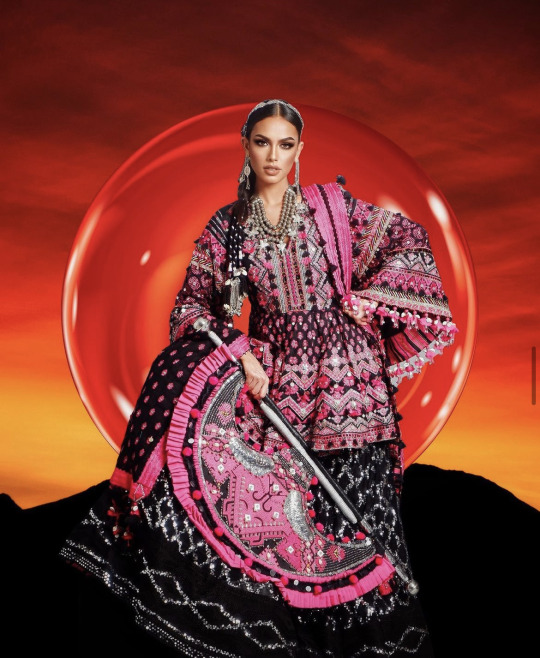

Miss Universe Pakistan 2023 National Costume
The name of the National Costume is Pehchaan or in English 'Identity' Meaning: the distinguishing character or personality of an individual: INDIVIDUALITY Everyone has their own Pehchaan (Identity Miss Universe Pakistan message on her national costume is 'Unity in Diversity by celebrating its own Identity' Erica aims to celebrate the rich and diverse culture, history and lifestyle of Pakistan through her outfit. Pakistan is home to multiple ethnicities based on region, religion, language, and culture. Few of the existing ethnicities include Baloch, Brahui, Sindhi, Punjabi, Muhajir, Saraiki, Memon, Kalashi, Balti, Wakhi, Afghani, Kashmiri, and Hindkowan. This costume is a vibrant celebration of Pakistan's diverse cultures, seamlessly weaving together its distinct beauty and the profound love and unity embedded in its people's hearts. The intricate patchwork blends the rural and urban elements, paying homage to the rich crafts and heritage of Pakistan. The handcrafted fan, a major part of Pakistan's tribal lifestyle, is a symbol of power, and elegance and an ode to its roots. Meanwhile, the grand silhouette serves as a powerful visual testament to Pakistan's remarkable growth and evolution over time. It embodies the nation's journey from its roots in tradition to its strides toward modernity since gaining independence.
113 notes
·
View notes
Text
I am actually so fucking sick of pro-Palestine Jews being treated like race traitors. Sorry for not deepthroating the boot of ethnonationalism. Sorry for recognizing that settler colonialism doesn’t help repair the world. Sorry for valuing the humanity of others.
We are not “owed” the land of Palestine more than the people who already live there. Regardless of whether Jews are considered indigenous to that region, that does not give us the right to take it for ourselves.
Also, I can’t help but notice that Zionism denigrates the diaspora as a whole. Diasporic cultures, languages, traditions, etc. are put down or ignored (ESPECIALLY SEPHARDIC CULTURES) because of this nonsensical need to “return to the homeland”. Like Israeli Jews are more Jewish than the rest of us. Like they’re the only ones that really matter.
If there was ever going to be a Jewish homeland for me, it would be in Eastern Europe. I have no idea how long ago my ancestors left Israel/Palestine, but I know exactly when they left Russia, Poland, and Lithuania to come to the US. That’s where my history is. That’s where my culture comes from. And you know what? I’m not owed a home in any of those places either. My family left those countries multiple generations ago. Whatever they left behind, it’s either gone or belongs to someone else. That’s just how it goes.
Never again means NEVER AGAIN, FOR ANYONE, ANYWHERE, FOR ANY REASON.
Free Palestine or go fuck yourself.
30 notes
·
View notes